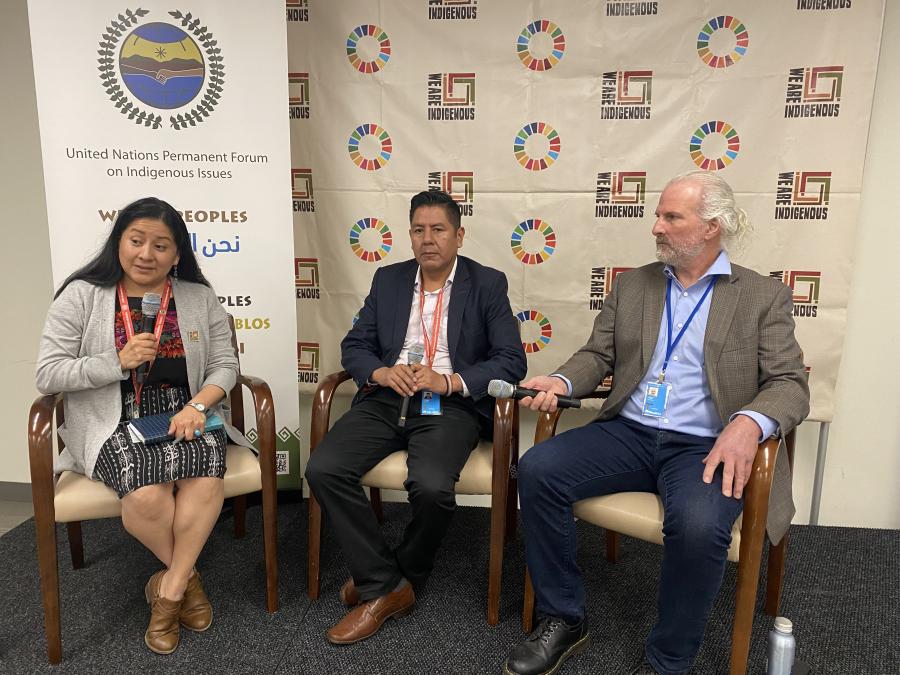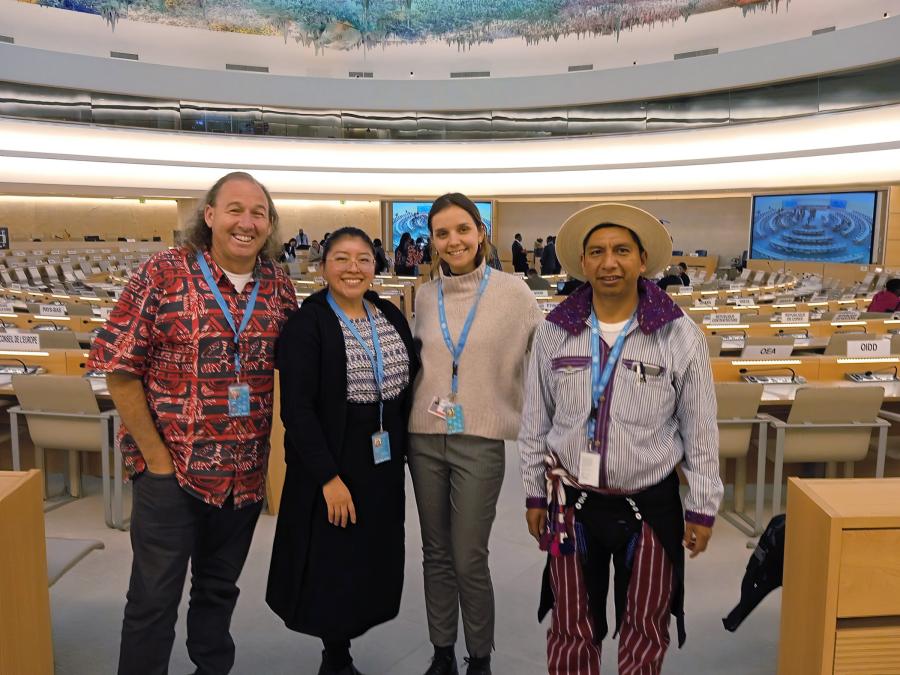How are we to understand the rebellion in Chiapas? Did it arise from the generalized poverty of peasants in Mexico's neglected south, as many press reports claim? This paper explores the more complex background of the rebellion, of peasants who are much more differentiated than is acknowledged in press reports, and of a region that is fully articulated into the economic and political changes affecting Mexico as a whole. It draws on research in which I have been using the approach of geographic information systems (GIS) to compile data relating to agrarian change in southeastern Mexico over the past half century, as a way of contextualizing case studies in the central highlands of Chiapas.
HEARTLAND OF THE REBELLION: THE EASTERN LOWLANDS
First I wish to explore why the eastern lowlands of Chiapas was the heartland of the Ejercito Zapatista de Liberación Nacional (EZLN). Although the roots of the uprising - poverty, exploitation and anger over the government's seeming abandonment of the peasantry - are not unique to eastern Chiapas, the way the region's recent history combined them brought rebellion to a head among the people there. The circumstances of this recent history are worth examining as immediate causes of the rebellion.
One circumstance is the weak institutional presence of the national state and its ruling party in the eastern lowlands, stemming from the region's settlement as a colonizing frontierland long after the Mexican state coopted peasants of other regions of Chiapas through agrarian reform. The national state's stronger control of Chiapas's central highlands and western regions dates back to the turn of the century. At that time, developers in President Porfirio Diaz's government built rail and roadways spanning the Isthmus of Tehuantepec down the Pacific Coast to control burgeoning coffee exports and open up the central part of the state for ranching and commercial agriculture.
They thereby reoriented northward a region whose old elites still inclined toward Guatemala, which held jurisdiction over Chiapas before independence. After the Mexican Revolution Lázaro Cárdenas's functionaries deepened the reorientation, securing profound and lasting peasant and Indian loyalties through agrarian reform in the highland areas of central and western Chiapas.
Eastern Chiapas, by contrast, largely unpeopled in Lázaro Cárdenas's era, was brought within the agrarian reform only after the 1950s. At that time, Tzeltal and Tzotzil Indians from the overpopulated central highlands began to flow eastward to colonize and farm the rugged tropical forest, following trails blazed by loggers in the region.
Once there, colonists became enmeshed in constant struggle, competing with loggers, ranchers, and even one another for land and livelihood, as slash and burn farming deforested the region, degraded its fragile soils, and rapidly converted the tropical land into territory good only for coffee growing and grazing. When agrarian reform followed peasant colonization into the eastern lowlands, it did so reactively, rather than proactively, and often in ways that failed to resolve conflicts inherent in the settlement of tropical frontierlands.
Another set of circumstances has to do with the alternatives that settlers of eastern Chiapas developed to Mexico's established institutions, including those of the ruling party. The heterogeneity of colonists' backgrounds contributed to their inclination toward new modalities of organizing in the region. Indians from the highlands, who often had left behind the identities specific to the ethnic communities of their origin, mingled with Indians from other communities, often in the same colonies. Furthermore, by the 1970s, immigrants from other areas of Mexico joined the flow of highland Indians into the east under Luís Echeverría's populist promotion of colonization. Later, as the Guatemalan war raged, officials invited additional out-of-state colonists in to help fill up the vacuum of settlement near the border with Guatemala and thus prevent incursion of Guatemalan refugees, whom the government confined to border camps.
As Tzeltal, Tzotzil, and other Maya Indians from central Chiapas converged with non-Indian peasants from central and northern Mexico in rapidly shifting frontier settlements, colonists shucked ethnic origin for more generic peasant identities. They embraced new forms of peasant organizing and new modalities for galvanizing community, including diverse sects of Protestantism. In effect, new religions, new organizations, and even new cooperative production enterprises replaced ethnicity as the basis for building community.
During the 1980s, eastern Chiapas emerged as a region of opposition to the PRI in the organizing and political affiliation of the peasantry. Immigrants from central and northern Mexico, who had been influenced by student activists among the survivors of the massacre in Mexico's Tlatelolco Square in 1968, formed peasant organizations as alternatives to those of the PRI. After the debt crisis of 1982, the state removed subsidies for fertilizer and dismantled the system of agrarian credit, and the influence of these alternative organizations spread as they developed non-government credits and market outlets.
By the time of the 1988 presidential elections, organizations independent of the PRI and often opposed to it, such as the Central Independiente de Obreros Agrícolas y Campesinos (CIOAC), Organización Campesina Emiliano Zapata (OCEZ), and the Unión de Uniones dominated the landscape of eastern Chiapas, in contrast to the predominance of the PRI in central and western Chiapas, where the PRI's long-standing alliances with Indian leaders managed to deflect and marginalize opposition.
Since 1988, the government of Salinas de Gortari has further dismantled programs favoring peasants while embracing free trade that exposes crops to falling prices. Prices for coffee, the cash crop on which eastern smallholders depended, plummeted after the government's dissolution of INMECAFE (the Instituto Mexicano del Café). Understandably, peasants of the region gave up hope for their future within the country's new economic system.
These circumstances help explain why peasants of eastern Chiapas, disaffected from the PRI in a region the ruling party has failed to control, should have risen in rebellion. But the Zapatistas themselves identify NAFTA and the government's abrogation of agrarian reform as sources of their discontent, critiquing the national project of economic restricting and the national state's seeming betrayal of Mexico's peasantry as a client group. That the rebels have been winning support from peasant sympathizers throughout Chiapas in regions where energy development of the 1970s and economic restructuring of the 1980s have had their strongest impacts is reason enough to look to these developments for the roots of the rebellion.
ROOT CAUSES: ENERGY DEVELOPMENT AND POST-1982 ECONOMIC RESTRUCTURING
The surprisingly nationalist vision of eastern Chiapas' rebels has its roots in a paradoxical outcome of oil export booms in many developing countries - the unexpected blight of agriculture. After the OPEC crisis in 1972, Mexico borrowed internationally to expand oil production for export and to finance ambitious projects of development. During the resulting development boom, Mexico's agriculture declined from 14% of GDP in 1965 to just 7% of GDP in 1982, as resources for production flowed into other sectors. Mexico, propelled by energy development, became more and more oriented towards foreign markets and away from food self-sufficiency. As peasants began to migrate into undocumented wage work in the United States, Mexico became dependent upon maize imports for its basic staple food, despite efforts of the state to buttress maize production through agrarian credits and subsidies. The importation of corn from the North-American midwest touched off a debate as to whether Mexico needed peasants any more, and whether it wanted them in the cities, whose squatter settlements burgeoned, or in the countryside.
These changes directly involved Mexico's southeast as Mexico developed the Gulf coast oil fields of Tabasco. Mexico also built two major new dams along Chiapas's Grijalva river during the boom. The region began to supply the rest of Mexico with over 50% of its electric power and most of its petroleum. Metropolitan areas close to the oil fields grew explosively, as did cities throughout the southeast whose commerce was spurred by energy development. Meanwhile, the proportion of economically active population in agriculture slackened dramatically, even in eastern Chiapas, as peasant men set farming aside to take up jobs in other sectors, in commerce, transport, and construction.
The debate as to whether Mexico needed or could even afford peasants sharpened after 1982, as the international community of bankers and neo-liberal economic planners forced Mexico to accept austerity and economic restructuring in the wake of crisis over its $96 billion foreign debt. The government of Miguel de la Madrid reduced the subsidies for fertilizer and crop insurance, paving the way for a wholesale revision in the state's system of agrarian credits under Salinas de Gortari after he claimed the presidency in disputed elections in 1988. In 1992, Salinas's government brought land reform - the very issue on which his party had originally risen to power - to a halt, revising Article 27 of the Constitution in ways that put peasants at risk of losing not just the land basis of their livelihoods, but also their power as a constituency. The Zapatistas are trying to reclaim that constituency.
As the era of the state's historic relationship to the peasantry as a client group came to an end, the ruling party began increasingly to use coercive tactics to hold on to the peasants' vote. A new kind of exclusionary politics developed to discipline those who challenged the existing power holders affiliated with the PRI. The government's Solidarity program, ostensibly designed to alleviate poverty in ways that reached out to people regardless of political affiliation, instead became intensely political in its administration in Chiapas, even in the tiniest hamlets, where benefits were often withheld from those not loyal to the PRI. Meanwhile, in areas of strong loyalties of peasant leadership to the PRI, especially in Indian communities of the central highlands, the government allowed its henchmen to expel "Protestants" from villages, often for political reasons. Although critics questioned the constitutionality of this practice, the government generally accepted the expulsions as consistent with the rights of natives to prescribe custom in their communities, a justification which masked the political expediency of supporting henchmen who wanted to rid themselves of opposition at the local level. The Zapatistas are holding the ruling party responsible for such tactics and, more generally, for the undemocratic politics that have kept opposition candidates out of power in town halls as well as at higher levels of government.
Economic restructuring in the wake of the oil boom and consequent debt crisis has also affected Mexico's southeast. A good deal of economic restructuring has already taken place in the region, much of it actually initiated by peasant groups. Many peasants developed "mixed portfolios" of off-farm livelihoods during the energy boom. After the 1982 debt crisis, which revived agriculture on a regional basis within Chiapas, peasants began to draw income from off-farm production into agricultural production by investing in chemical inputs and transport. After the 1982 debt crisis, many farmers who had turned to jobs in construction or transport during the oil boom lost this source of income and were forced to return to farming at least part-time. They invested their income from their off-farm jobs into agricultural chemicals and mechanized equipment.
Many peasants have benefited from such capitalization of their agrarian production, but often at the expense of others in their communities who cannot afford the chemical inputs or trucking fees. Women, who have generally not had access to the wage-earning opportunities of the energy boom, together with their children, suffer disproportionately in households broken by conflicts over consumption of men's income. Men are often spending their earnings on electronic equipment, drink, and stylish clothes, often in the places far from home where they work. As a result, they don't bring their income home, or don't bring enough home to support the food and clothing needs of their women and children. When wives complain, men often argue in their own defense that they have a right to spend the money that they earn. Women, who used to have stronger claims on household income from the preparation of food for workers in milpas, now have weaker claims because there are fewer workers to feed when men use chemical herbicides, and because their husbands eat away from home when they work elsewhere or travel elsewhere in commerce.
Many poor men, who have land but not the cash needed to purchase capital inputs such as fertilizer or herbicide, are forced to rent their land to wealthier compatriots and to work for them as fieldhands for wages which average about half that of the region's minimum wage.
The overall effect of the economic restructuring has been to differentiate the rich from the poor, often to such a degree that the impoverished fall out of the bottom strate of their communities into squatter settlements around cities, attempting to eke out a livelihood from street vending or sale of simple artisanal goods. The markets and commerce of cities and larger towns of central and western Chiapas thus provide a safety valve for impoverished people of nearby communities. But in eastern Chiapas, which has no major commercial centers and is largely inaccessible even to road transport, the impoverished have no place to turn and little to lose by joining in the rebellion.
The rebellion galvanized nation-wide critiques of Salinas de Gortari's policies of economic restructuring and led to demands for fair elections. Peasants in Chiapas and elsewhere have taken over town halls in protest against the old style of "politics as usual" which guaranteed posts to those loyal to the PRI. Because the Zapatistas negotiate from a nearly-inaccessible heartland that the Mexican military has little possibility of controlling without a massive campaign of counter insurgency, the rebels hold a strong suit in their bid to redirect the forces that shape not just their region but the nation as a whole in its articulation into the international economy as an exporter of petroleum and a signatory to the North American Free Trade Agreement.
Article copyright Cultural Survival, Inc.



